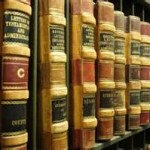Seventh Circuit to Form 19: Drop Dead!
 Last week I bemoaned how the Seventh Circuit had thoroughly botched the already confusing state of affairs that is the elements of a prima facie copyright infringement claim. But as a bonus, the Peters v. West opinion also had troubling things to say about what is now required to successfully plead a copyright infringement claim under the new “plausibility” regime announced by the Supreme Court in Twombly and Iqbal.
Last week I bemoaned how the Seventh Circuit had thoroughly botched the already confusing state of affairs that is the elements of a prima facie copyright infringement claim. But as a bonus, the Peters v. West opinion also had troubling things to say about what is now required to successfully plead a copyright infringement claim under the new “plausibility” regime announced by the Supreme Court in Twombly and Iqbal.
As a refresher, here’s how the Peters court defined the element of infringement (the other element for a claim of copyright infringement being ownership of a valid and registered copyright):
Fundamentally, proving the basic tort of infringement simply requires the plaintiff to show that the defendant had an actual opportunity to copy the original (this is because independent creation is a defense to copyright infringement), and that the two works share enough unique features to give rise to a breach of the duty not to copy another’s work.
Note that the court is discussing what the plaintiff must ultimately prove, which even after Twombly and Iqbal is not necessarily what the plaintiff must allege. Swierkiewicz v. Sorema, which distinguished between those two, is still good law; Iqbal simply requires that the plaintiff allege enough to make a claim plausible, which may or may not require pleading specific facts. Nevertheless, many courts even pre-Twombly have been requiring plaintiffs to march through the elements in their complaints, and now post-Iqbal, each of those elements must be “plausible.”
So what does a plaintiff, according to the Seventh Circuit, now have to plead in order to plausibly allege infringement?

 In my
In my